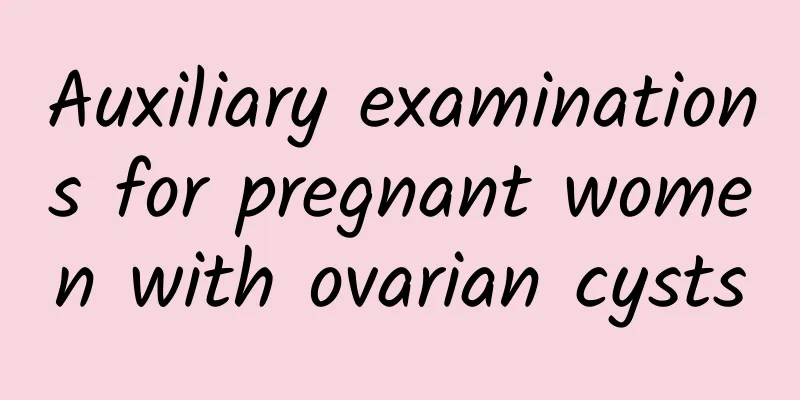Auxiliary examinations for pregnant women with ovarian cysts

|
After a patient with ovarian cysts becomes pregnant, the cyst itself generally has no direct adverse effect on the growth and development of the fetus. Unless the tumor is too large and occupies most of the abdominal cavity, thus restricting and hindering the growth of the uterus, it may lead to late miscarriage or premature birth. In addition, when the mother is giving birth, if the ovarian cyst is incarcerated in the pelvic cavity, it often hinders the descent of the fetal presenting part, resulting in obstructive dystocia. Pelvic B-mode ultrasound examination can assist in the examination of ovarian cysts. After an ovarian mass is found, regular B-mode ultrasound follow-up during pregnancy will help further determine the nature of the mass. Auxiliary examinations for pregnant women with ovarian cysts Pelvic B-type ultrasound examination: Pelvic B-type ultrasound examination during pregnancy is the most reliable method for diagnosing ovarian cysts. It can often find ovarian tumors that are missed by pelvic examination during pregnancy, thus making up for the shortcomings of pelvic examination. However, it should be noted that when performing B-type ultrasound examination in the late pregnancy, one should not simply focus on observing the fetus, placenta and amniotic fluid and ignore the examination of the uterine appendages, so as to avoid missing the diagnosis of appendage masses. Type B ultrasound can not only determine the location, size, shape of the tumor and its relationship with the uterus, but also determine whether the contents of the tumor are cystic, solid, or alternating between cystic and solid, whether there are septa, and whether there is fluid accumulation in the pelvic cavity. Note: CT examination is harmful to the fetus and is contraindicated during pregnancy. Although MRI examination can be used during pregnancy, it is expensive and generally unnecessary after the diagnosis is confirmed by B-ultrasound examination. |
<<: Predisposing factors for acute pelvic inflammatory disease
>>: Local treatment methods for vulvar leukoplakia
Recommend
The choice of treatment for primary dysmenorrhea requires correct
Dysmenorrhea is divided into primary dysmenorrhea...
Will I feel pain in my stomach if I have a miscarriage? Let me give you a detailed answer to this question.
Pregnancy is a very happy thing, but sometimes yo...
Ectopic pregnancy does not affect fertility again
For female friends who have experienced an ectopi...
Experts explain why painless abortion should not be done too early
What is the reason why painless abortion cannot b...
How to take medicine for habitual miscarriage?
For pregnant women, if they have had habitual mis...
Paying attention to details in life can reduce the chance of vaginitis
Nowadays, many women suffer from vaginitis, which...
People should pay attention to the common symptoms of multiple uterine fibroids
Multiple uterine fibroids are a type of gynecolog...
Toast with meat has high calories. 3 servings exceed the dinner limit
Before the Mid-Autumn Festival, many families hav...
How to treat female cervical erosion? Physical treatment methods for female cervical erosion
Can cervical erosion be cured? Many women are alr...
Exercise in the late stage of cervicitis
Exercise in the late stage of cervicitis. We know...
How to perform superconducting visual painless abortion
How to perform superconducting visual painless ab...
What are the hazards of severe cervical erosion?
Everyone wants to have a healthy body, but there ...
Are endometritis and pelvic inflammatory disease treated with the same medication?
There may be some overlap in the medications used...
Analyze the common causes of dysmenorrhea
Dysmenorrhea is a gynecological disease that occu...
Traditional Chinese Medicine: Acupuncture thread embedding for weight loss combined with diet control
As more and more people pursue beauty, "acup...









